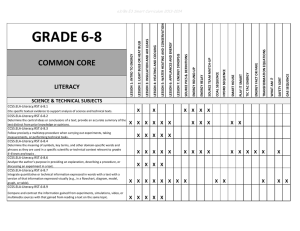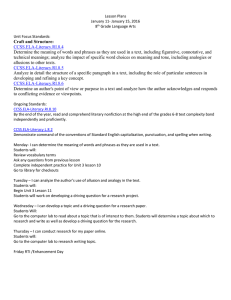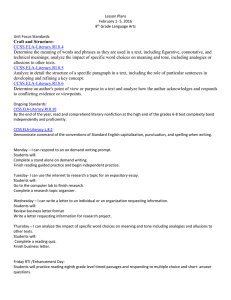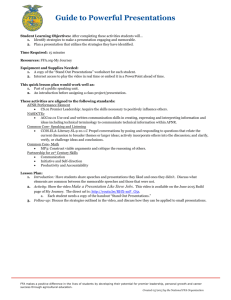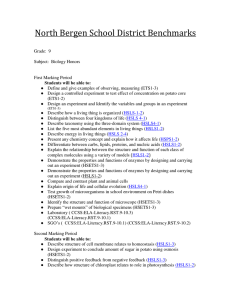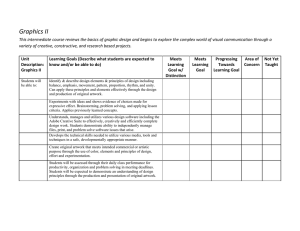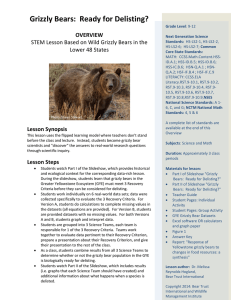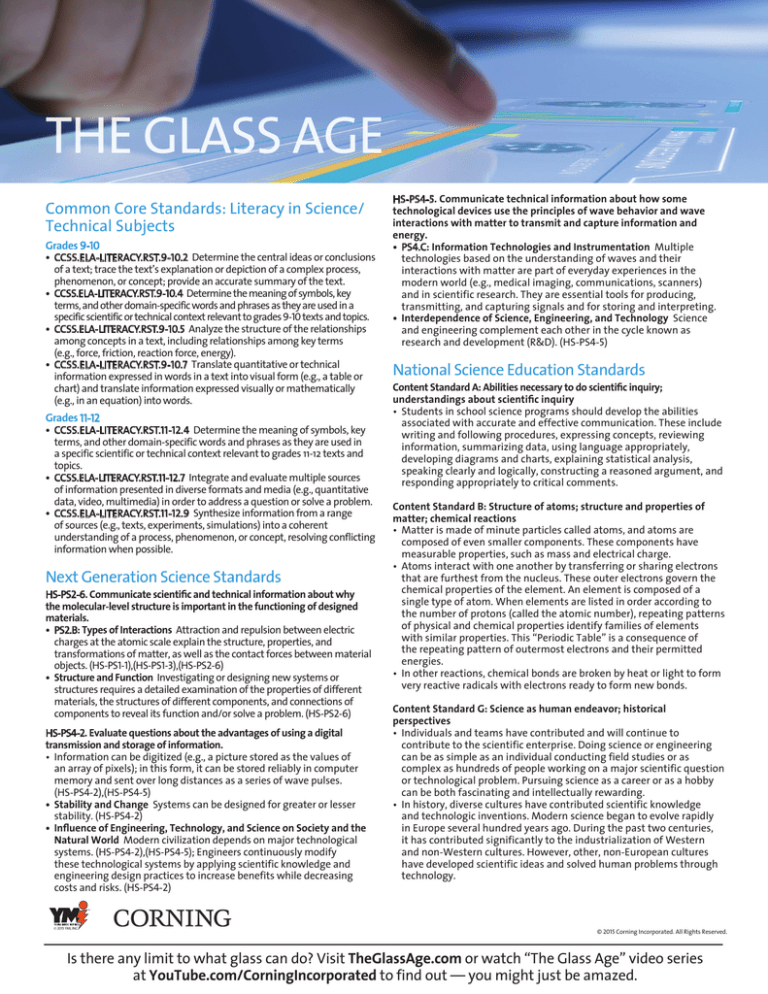
The Glass Age
Common Core Standards: Literacy in Science/
Technical Subjects
Grades 9-10
• CCSS.ELA-LITERACY.RST.9-10.2 Determine the central ideas or conclusions
of a text; trace the text’s explanation or depiction of a complex process,
phenomenon, or concept; provide an accurate summary of the text.
• CCSS.ELA-LITERACY.RST.9-10.4 Determine the meaning of symbols, key
terms, and other domain-specific words and phrases as they are used in a
specific scientific or technical context relevant to grades 9-10 texts and topics.
• CCSS.ELA-LITERACY.RST.9-10.5 Analyze the structure of the relationships
among concepts in a text, including relationships among key terms
(e.g., force, friction, reaction force, energy).
• CCSS.ELA-LITERACY.RST.9-10.7 Translate quantitative or technical
information expressed in words in a text into visual form (e.g., a table or
chart) and translate information expressed visually or mathematically
(e.g., in an equation) into words.
Grades 11-12
• CCSS.ELA-LITERACY.RST.11-12.4 Determine the meaning of symbols, key
terms, and other domain-specific words and phrases as they are used in
a specific scientific or technical context relevant to grades 11-12 texts and
topics.
• CCSS.ELA-LITERACY.RST.11-12.7 Integrate and evaluate multiple sources
of information presented in diverse formats and media (e.g., quantitative
data, video, multimedia) in order to address a question or solve a problem.
• CCSS.ELA-LITERACY.RST.11-12.9 Synthesize information from a range
of sources (e.g., texts, experiments, simulations) into a coherent
understanding of a process, phenomenon, or concept, resolving conflicting
information when possible.
Next Generation Science Standards
HS-PS2-6. Communicate scientific and technical information about why
the molecular-level structure is important in the functioning of designed
materials.
• PS2.B: Types of Interactions Attraction and repulsion between electric
charges at the atomic scale explain the structure, properties, and
transformations of matter, as well as the contact forces between material
objects. (HS-PS1-1),(HS-PS1-3),(HS-PS2-6)
• Structure and Function Investigating or designing new systems or
structures requires a detailed examination of the properties of different
materials, the structures of different components, and connections of
components to reveal its function and/or solve a problem. (HS-PS2-6)
HS-PS4-2. Evaluate questions about the advantages of using a digital
transmission and storage of information.
• Information can be digitized (e.g., a picture stored as the values of
an array of pixels); in this form, it can be stored reliably in computer
memory and sent over long distances as a series of wave pulses.
(HS-PS4-2),(HS-PS4-5)
• Stability and Change Systems can be designed for greater or lesser
stability. (HS-PS4-2)
• Influence of Engineering, Technology, and Science on Society and the
Natural World Modern civilization depends on major technological
systems. (HS-PS4-2),(HS-PS4-5); Engineers continuously modify
these technological systems by applying scientific knowledge and
engineering design practices to increase benefits while decreasing
costs and risks. (HS-PS4-2)
© 2015 YMI, Inc.
HS-PS4-5. Communicate technical information about how some
technological devices use the principles of wave behavior and wave
interactions with matter to transmit and capture information and
energy.
• PS4.C: Information Technologies and Instrumentation Multiple
technologies based on the understanding of waves and their
interactions with matter are part of everyday experiences in the
modern world (e.g., medical imaging, communications, scanners)
and in scientific research. They are essential tools for producing,
transmitting, and capturing signals and for storing and interpreting.
• Interdependence of Science, Engineering, and Technology Science
and engineering complement each other in the cycle known as
research and development (R&D). (HS-PS4-5)
National Science Education Standards
Content Standard A: Abilities necessary to do scientific inquiry;
understandings about scientific inquiry
• Students in school science programs should develop the abilities
associated with accurate and effective communication. These include
writing and following procedures, expressing concepts, reviewing
information, summarizing data, using language appropriately,
developing diagrams and charts, explaining statistical analysis,
speaking clearly and logically, constructing a reasoned argument, and
responding appropriately to critical comments.
Content Standard B: Structure of atoms; structure and properties of
matter; chemical reactions
• Matter is made of minute particles called atoms, and atoms are
composed of even smaller components. These components have
measurable properties, such as mass and electrical charge.
• Atoms interact with one another by transferring or sharing electrons
that are furthest from the nucleus. These outer electrons govern the
chemical properties of the element. An element is composed of a
single type of atom. When elements are listed in order according to
the number of protons (called the atomic number), repeating patterns
of physical and chemical properties identify families of elements
with similar properties. This “Periodic Table” is a consequence of
the repeating pattern of outermost electrons and their permitted
energies.
• In other reactions, chemical bonds are broken by heat or light to form
very reactive radicals with electrons ready to form new bonds.
Content Standard G: Science as human endeavor; historical
perspectives
• Individuals and teams have contributed and will continue to
contribute to the scientific enterprise. Doing science or engineering
can be as simple as an individual conducting field studies or as
complex as hundreds of people working on a major scientific question
or technological problem. Pursuing science as a career or as a hobby
can be both fascinating and intellectually rewarding.
• In history, diverse cultures have contributed scientific knowledge
and technologic inventions. Modern science began to evolve rapidly
in Europe several hundred years ago. During the past two centuries,
it has contributed significantly to the industrialization of Western
and non-Western cultures. However, other, non-European cultures
have developed scientific ideas and solved human problems through
technology.
© 2015 Corning Incorporated. All Rights Reserved.
Is there any limit to what glass can do? Visit TheGlassAge.com or watch “The Glass Age” video series
at YouTube.com/CorningIncorporated to find out — you might just be amazed.




